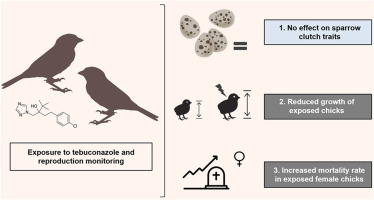"Make Your Yard #NativeBee Friendly
"Perhaps you too have noticed fewer bees in your garden or orchard and are looking for ways to create or improve habitat for them.
- Choose nonchemical solutions to insect problems. Most #insecticides are highly toxic to bees. For information on nonchemical insect pest management, see our Habitats fact sheet, Beneficial Insects and #Spiders in Your #Maine Backyard (bulletin #7150).
- Curb the “‘erb.” Avoid using herbicides. The long-term negative health effects of #herbicides on humans are not fully known. Tolerate, in fact, appreciate the beauty and usefulness of flowering 'weeds' such as dandelion. Their presence means more variety of nectar and pollen sources for native bees and others, such as butterflies. They help fill gaps in the succession of planted flowers, and add to the variety of flower shapes, colors and scents.
- Provide a source of pesticide-free water and mud. A birdbath, dripping faucet or mud puddle works nicely for bees and attracts butterflies and beneficial insects. To assure a clean source of water, change the water in your birdbath frequently, at least once a day. This will also prevent mosquitoes breeding there. Mud is an important nesting material for several bee species.
- Establish set-asides and hedgerows. Bees need undisturbed areas for nesting. Hedgerows or a bit of clutter, such as brush piles of sumac or raspberry canes, can make a safe nest area for them. Set-asides may be areas that are not mowed and are left undisturbed. They could be bare ground, preferably with a sunny, southern exposure ideal for certain species’ nesting requirements. Lack of appropriate nest sites is a limiting factor on population.
- Provide conservation bee nesting houses.
- Minimize lawn area, or mow less often. Mowing grass often kills bees. To avoid this, mow when they are not so active, when it’s cool, overcast and windy, or late in the evening. Allowing the lawn to revert to a more natural state, by not mowing or reducing the area that is mowed, will result in a profusion of bee forage and more potential nest sites over time. Areas that are not mowed become set-asides and may be colonized by many flowering plants.
- Maximize flower space and plant species diversity. Have gardens, fruit-bearing trees and shrubs, thickets and hedgerows of flowering shrubs, and set-aside areas in your yard. This diversity will provide flower shape variety, a greater quantity of pollen and nectar, and a succession of flowering times.
- Provide a succession of blooming plants throughout the growing season. Food plants are an essential habitat requirement for bees and must be available early, middle and late season. Some native bees are actively forging adults by March and others are active until early November. Bumble bees are a good example of the importance of succession blooming. From early spring until late fall they require nectar and pollen; the number of queens a colony produces depends on the number of workers that are produced in midsummer, which in turn depends on the availability of high quality nectar and pollen.
- Provide a mix of flower shapes to accommodate different bee tongue lengths. Small bees, such as the halictids, have short tongues; other species have long tongues. Asters and other composites nicely suit short-tongue bees, but tubular flowers with long corollas are only suitable for species with long tongues. Flower size is not an indication of the quality or quantity of nectar.
- Include lots of purple, blue, and yellow flowers in your bee sanctuary. These are the most attractive colors to bees. Planting the colors in masses will get their attention!
- Emphasize native perennial plants. Perennials generally are richer nectar and pollen sources and, because they bloom year after year, they provide a more dependable food source than annuals, which must be replanted each year. Our native bees have evolved with our native plants, to mutual benefit.
- Avoid horticultural plants, such as marigolds and roses, bred as 'doubles.' These plants have been bred for more showy petals in place of anthers. Thus, they have little or no pollen. Also, the many petals often make the nectar physically inaccessible to bees, #butterflies, #hummingbirds and others.
- Select sunny locations, sheltered from the wind, for your flower plantings. Smaller bees, especially, use the sun to help warm their bodies. Also, plants receiving at least six hours of sunlight have more nectar than those receiving less.
- Remember that early spring and late autumn are very challenging times for bees because of coolness, highly variable temperatures and a lack of flowers. In the spring, tolerate those #dandelions. In the late fall, let the bees and migrating monarch butterflies have the few remaining flowers. Leaving #FallenFruit to rot, such as windfall #pears, may help too, but be aware that you will also be attracting hungry #wasps.
- Practice peaceful coexistence. Bees sometimes choose to nest in inconvenient places. Rather than exterminating them, think of it as an opportunity to see and learn about them up close."
https://extension.umaine.edu/publications/7153e/
https://www.cnrs.fr/fr/presse/un-des-fongicides-les-plus-utilises-en-agriculture-nuit-la-reproduction-des-oiseaux



